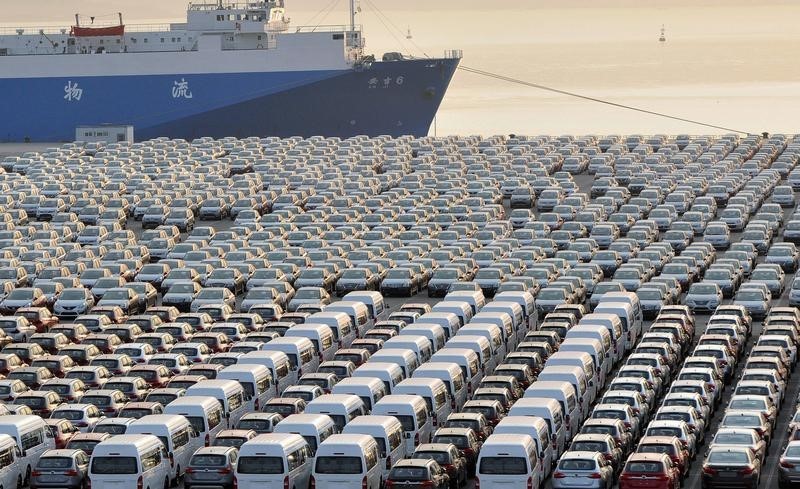By Gina Lee
Investing.com – Chinese imports saw their fastest growth in 2020, and exports extended strong gains in September as more countries loosened COVID-19 restrictions and world’s second-largest economy continued its economic recovery. However, the country’s trade surplus with the United States narrowed in the same month.
Data released by the National Bureau of Statistics earlier in the day showed that exports were up 9.9% year-on-year, up from August’s 9.5%, and that imports were up 13.2% year-on-year, higher than August’s 2.1% slump.
The trade surplus stood at $37 billion, down from August’s $58.93 billion surplus and missing the $58 billion surplus predicted in forecasts prepared by Investing.com. Exports also missed their predicted 10% growth, while imports more than surpassed the predicted 0.3% growth.
The trade performance data suggested that Chinese exporters are continuing to recover from COVID-19's impact on overseas orders. They are also grabbing the opportunity to increase their market share as the global economy slowly restarts and other countries struggle with reduced manufacturing capacity.
Factory activity also saw an uptick, with data released during the previous week showing that the Caixin Services Purchasing Managers Index (PMI) rose to 54.8 in September.
However, exports could soon peak as the demand for Chinese-made protective gear starts to decline, and the base effect of the huge declines seen during the beginning of the year starts to wear off.
U.S.-China tensions are also expected to continue escalating ahead of the U.S. Nov. 3. presidential election. Despite U.S. and Chinese trade officials reaffirming their commitment to their phase 1 trade deal in an August phone call, China continues to lag on its pledge, made in February, to increase its purchases of U.S. goods. Department of Agriculture Secretary Sonny Perdue also expressed doubt earlier in the month about the probability of China purchasing enough U.S. agricultural products as agreed to in the phase 1 deal, saying that China may fail its commitments due to “non-agricultural trade issues”.
With the number of COVID-19 continuing to rise and China reporting a new cluster of COVID-19 cases in the port city of Qingdao on Monday, the road to recovery could have additional bumps yet.
